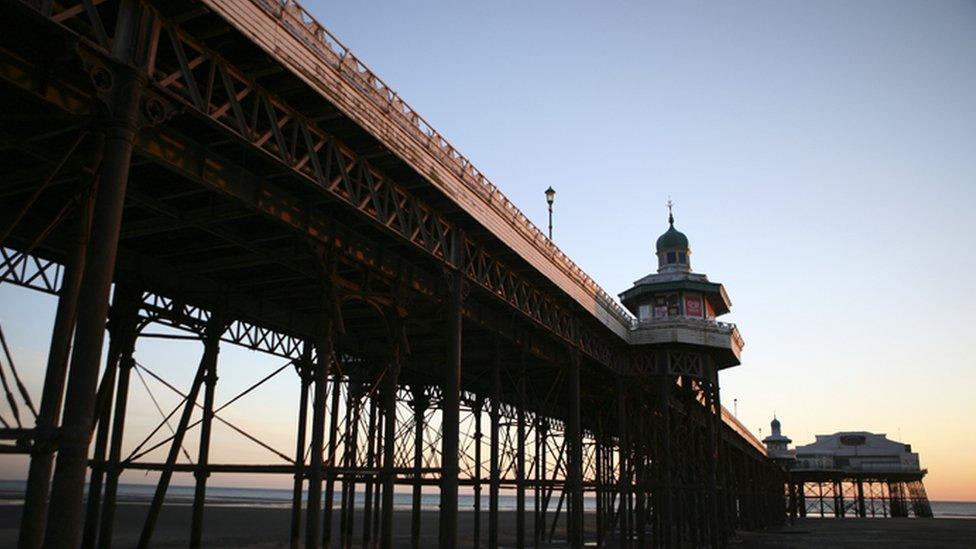Sand loss may threaten footings of Blackpool's piers
- Published

The level of the beach has dropped up to 3m (10ft) since the structures were built
A decline in sand levels around Blackpool's piers is a "significant issue" that could threaten their footings, the owner has said.
The loss of sand around the steel footings of North, Central and South Piers has accelerated in the last 15 years, the Blackpool Pier Company said.
The level of the beach has dropped up to 3m (10ft) since the structures were built more than 100 years ago, it said.
A council report said it was looking at ways to reduce erosion.
A recent 3D image of South Pier compared to a photograph of the pier from the time it opened in 1893, shows much more of the steel footings are now above beach level.
At the time of their construction, Victorian engineers built piles into the bedrock below to act as foundations for the piers.
Surveys show 3m (9.8ft) of sand loss at the base of South Pier, 1.5m (5ft) at Central Pier and one metre (3ft) at North Pier.

Victorian engineers built piles into the bedrock below to act as the foundations for the piers
Engineers say the rate of sand loss has accelerated since 2008, but there is no immediate threat.
The Blackpool Pier Company said it wanted to work with the council, which has received £57m from the Environment Agency for the Blackpool Central Area Beach Nourishment Scheme.
It will see replacement of sand that has been washed away from the base of the stepped sea defences, leaving the foundations exposed to erosion.
Disperse waves
Health and safety officer Mark Marshall, said: "We have a common interest in ensuring the piers are structurally sound by maintaining the correct sand levels around the footings.
"More sand around the bases of the piers means more weight around the foundations, so losing sand is a significant issue.
"The council has an interest in ensuring the beach levels so the sea defences are maintained and flood protection remains intact."
The beach replenishment project plan includes construction of 16 fishtail rock headlands to disperse waves and prevent erosion.
The council report said it would "reduce the recently identified long term trend of beach lowering", the Local Democracy Reporting Service said.

Why not follow BBC North West on Facebook, external, Twitter, external and Instagram, external? You can also send story ideas to northwest.newsonline@bbc.co.uk
Related topics
- Published17 July 2020

- Published13 June 2018

- Published18 October 2017

- Published9 July 2015
